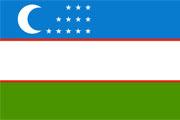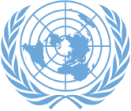Selection of development path, most loyal to our country and known worldwide as the Uzbek model, was an important milestone in the history of independent Uzbekistan.
It led to a follow-up processes of large-scale work towards achieving political and economic independence, a new stage in the history of national statehood.
The basis of this model of building a democratic state and civil society have laid down five principles of transition to a market economy. Priority of economy over politics, placing the state as main reformer, rule of law, strong social policy, phased and evolutionary reforms are among them.
In order to ensure the effectiveness of this approach, it is necessary to trace achievements of our country over the years of sovereign development.
Thus, thanks to the gradual implementation of reforms Uzbekistan became the first among CIS countries to overcome the decline of 90s, and in 1996 achieved positive economic growth, which has been accelerated dramatically in recent years not due to favorable world prices for raw materials, but on the sound basis of diversifying economy, implementation of structural reforms and active investment policy.
The country has achieved dramatic changes in dynamics and structure of economy, development of production and export capacity, social sphere, level and quality of life. Suffice it to say that between 1990 and 2014 republic‘s GDP at purchasing power parity increased by 6.3 times – from 27.1 up to 171.416 billion US dollars, and its growth rates over 11 years remain at around 8%.
The national economy has changed quantitatively and qualitatively. The proportion of industries and services has been consistently increased in the structure of GDP. The indicators, respectively, 17.6% and 33.8% in 1990, then it reached 33.5% and 54.5% in 2015. In turn, through the optimization of structure of sown areas and increase in productivity, efficient use of modern technologies in agriculture, the share of agricultural sector gradually decreased from 33.4% in 1991 to 16.6% in 2015. At the same time country achieved enormous progress in the sphere of food security. Today, republic's agriculture not only covers domestic demand for food products, but also provides significant expansion of export capacity.
We must not forget that in the last twenty years the world economy has experienced a number of shocks, including - the global financial crisis of 1997-1998, many sharp declines in stock and commodity markets, as well as the global financial and economic crisis that began in 2008 and lasted until present. However, even in these difficult conditions, our economy has demonstrated its reliability and resilience to external shocks, while implementation of timely and targeted anti-crisis program has created new opportunities for modernization of production and increase of competitiveness of exporters.
Implementation of measures provided for this program, along with a solid economic foundation established during the previous years, has ensured sustainable development of Uzbek economy in 2008 and first quarter of 2009, when GDP grew by 7.9%. Thus, results of reforms became more vivid in conditions of global financial and economic crisis in other countries, and these glorious achievements today attract a growing interest of world expert and business community.
It should be noted that the basis of Uzbek model also include issues related to development of social sphere, further increase in level and quality of life. Social regulation not only provides protection of vulnerable populations, but also mitigates income differentiation processes, process of property separation between social groups.
According to President’s report on the results of socio-economic development in 2015 and the major priorities for 2016, in current year 59.1% of total State budget expenditure will be allocated for social sphere, including for education – 33.7%, for healthcare – 14%. At the same time the costs of current maintenance and development of education sector will be increased against the previous year by 16.3%, healthcare - at 16%.
The state allocates considerable resources to implement the policy of care for the welfare of citizens. This can be seen in allocation of State budget. In 1990 only 31% of spending was directed to finance the social sphere, in 2015 this figure totaled 59.2%.
Today, another strategic priority for the modern development of Uzbekistan is to ensure the formation of even more favorable investment climate and business environment for doing business.
In addition, based on experience of developed countries and entrepreneurship, handicrafts traditions inherent to our people, the state is focusing on the development of small business and private entrepreneurship. This rapidly developing sector, which in 2015 ensured the production of 56.7% of GDP, is playing rightly a leading role in dynamic development of Uzbekistan.
Thus, in 2015 investments in equivalent of 15.8 billion US dollars has been drawn and disbursed from all financing sources, which demonstrated an increase of 9.5% against 2014. At the same time more than 3.3 billion US dollars, or over 21% of all investments – were foreign investments, of which foreign direct investments amounted to 73%.
It is important to emphasize that the validity and correctness of another important aspect of their own development model, which consists in defining the role of state in implementation of reforms, confirmed today, is observed even in developed countries, increasing the state's role in regulating the economy, taking place in connection with global financial and economic crisis.
Jahon Information Agency, Rustam Rakhimov


